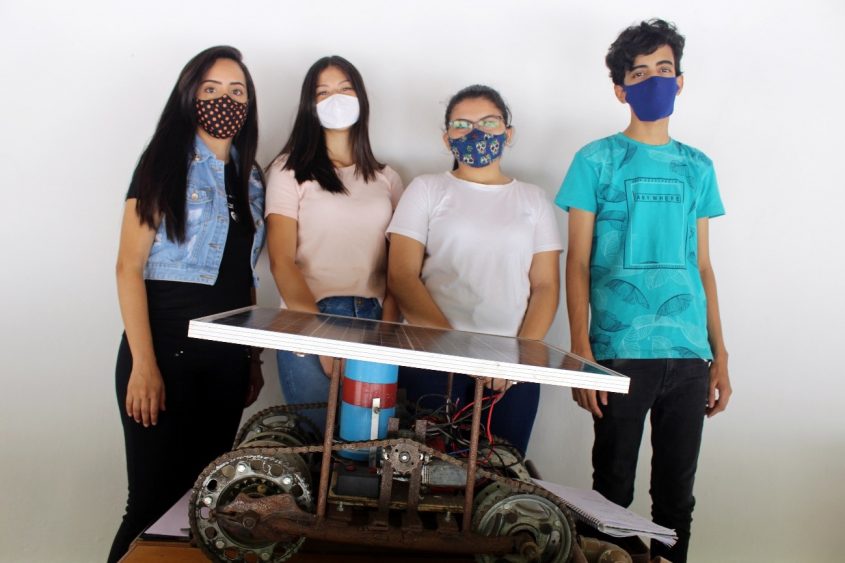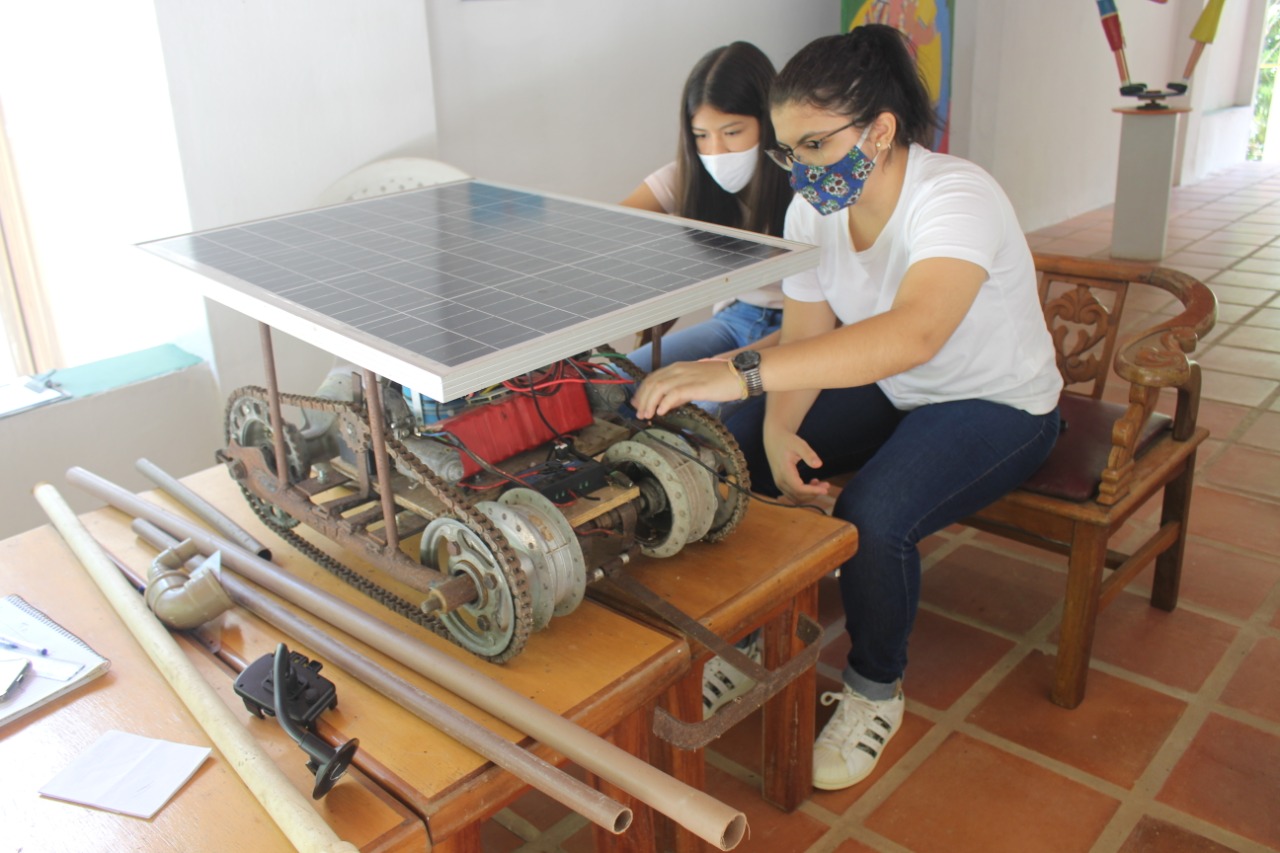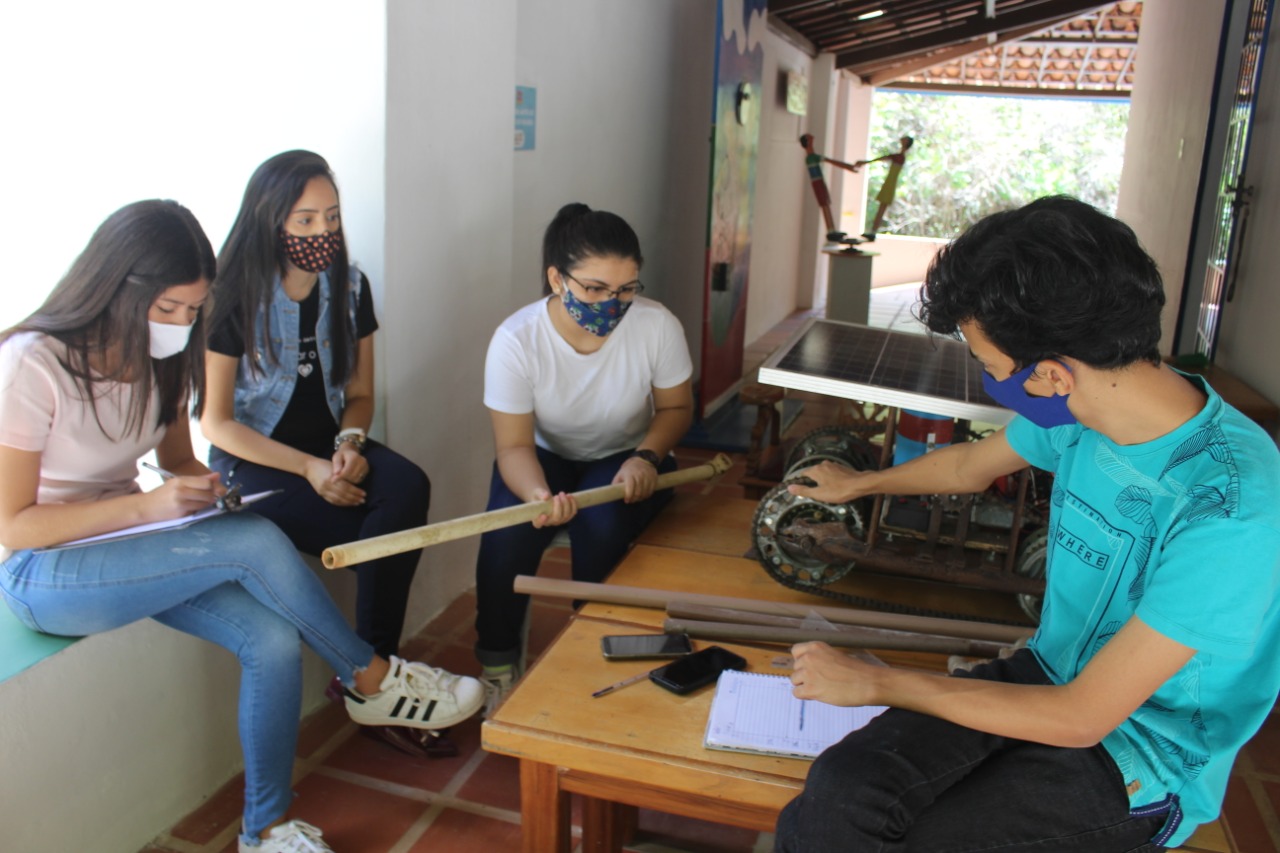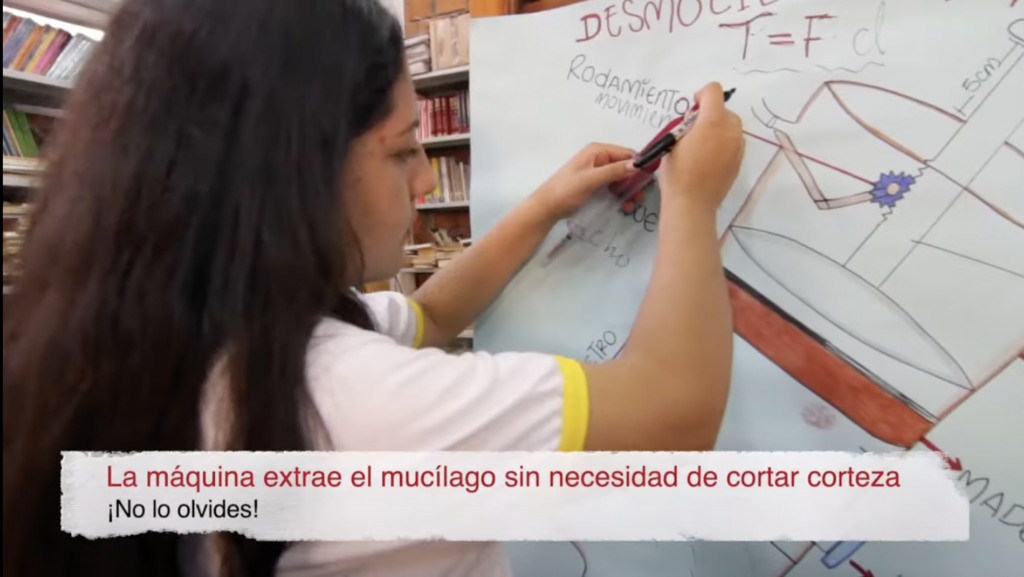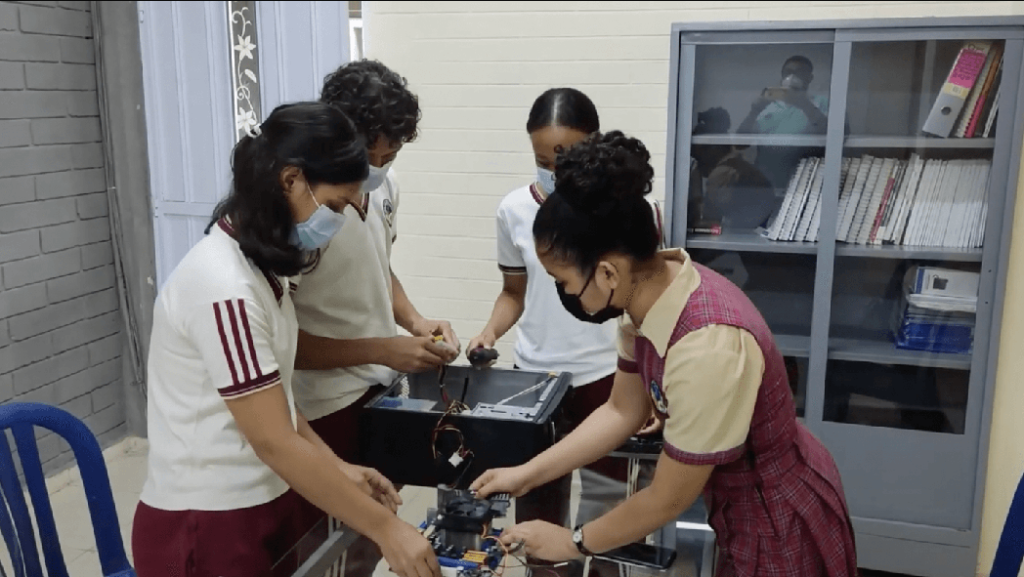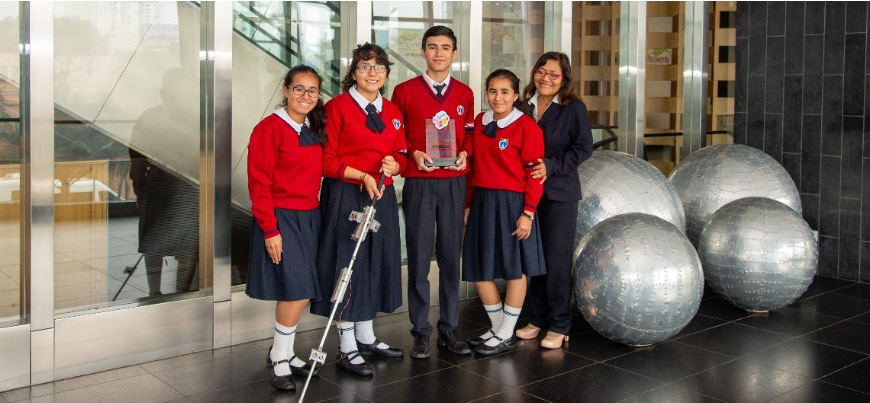Project gallery

Vespertílio 01: seeding robot for family farming
Report sent by the Teacher
Thayane Rabelo Braga FariasSchool
EEEP EDSON QUEIROZ Cascavel, Ceará, BrazilProject team composition
Anna Beatriz Santos Fonseca, Jamilly Felix Lim, Ud Madeiro Pereira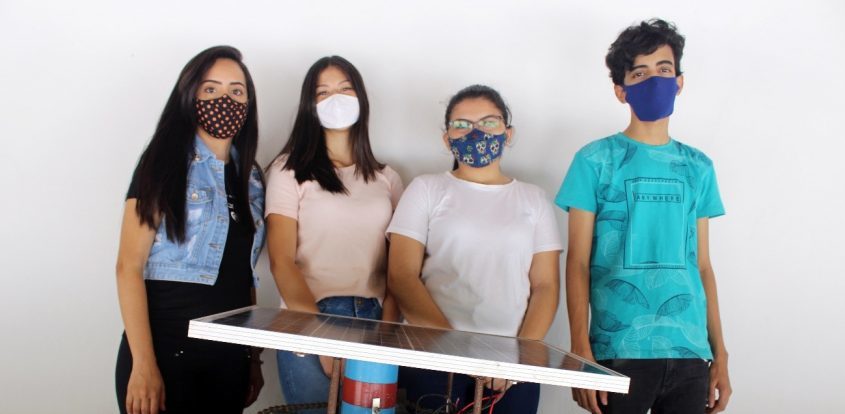
Age of students
15 to 17 years oldOther areas of knowledge
Geography, Social Sciences or SociologyProject duration
One yearSoft skills
Collaboration, Creativity, Critical thinkingSTEM areas
EngineeringEmpathy: learning from people’s values and needs
Project objective, problem to be solved, and main actions
The main objective of the project was to develop a low-cost robot, easy to transport and handle, to perform soil analysis and seed planting functions.
Food insecurity is one of the main problems in Brazil. So the project aims to help and intensify food production through robotics, with the search for alternative low-cost technologies. It also seeks to ensure dignified living and working conditions for rural people, as well as contribute to the preservation of agrobiodiversity.
The idea came from a student, who contacted me to advise him. From there, we started planning and organizing the research. The student identified the problem in the social environment in which he lives and thought about how he could help the farmers. Thus, interviews were conducted with the small farmer.
Definition: better understanding of the challenges
Deepening into the issue and involvement of the school and local community
To understand the challenge of the theme, research in the literature was carried out and studies were based on data from society in general.
The school community supported the idea, directing teachers who were related to the topic to contribute what was needed, and also had support from the school management and the parents of the student Ud Madeiro Pereira, who contributed to the development of the project.
As part of the project needed recyclable materials, the students sought these materials from the local community, in addition to seeking support from farmers in the region to understand the problems they face.
Ideation: developing creative solutions
The development of the solution
The practices involved in the construction of the robot (cutting, welding, assembly, etc.) were carried out in the home of the student author of the project due to the pandemic and under adult supervision. For the construction of the mechanical structure of the Vespertilio 01 robot, recycled materials taken from scrap motorcycle parts located in the city were used. Four hubs were used for the conveyor shafts and four crowns were used to move them. For traction, a pinion was fixed on the motor shaft. The treadmills are motorcycle chains. Two recycled electric car glass motors (90 kgf each) were used to move the robot. The seed distributor was made with a 100mm PVC pipe with a perforated wooden top and a PET bottle as a distribution regulating funnel. To complete the data, field tests were carried out with the prototype applied in the sowing of a plantation, as well as the continuous speed and the average cost of obtaining and marketing.
Prototype: making ideas tangible
The construction of the prototype
The final work obtained was a prototype. The presentation was held at a science fair in two stages: regional and state.
Test: putting ideas out into the world
Evaluation of the process and the developed solution
Since the project was an out-of-school project aimed at FEBRACE, there was no formal evaluation. So the project was progressing very well, being well publicized. What I did was to observe the performance of students in their roles and talk to them about it.
Reflections and pedagogical practices
The value of participating in Samsung Solve for Tomorrow
It was a very remarkable experience, as the project had great national repercussions, and reaching the final and winning the award is very gratifying due to the expectations and dedication of all those involved.
Achievements and advances perceived by the teacher, throughout the process
Make society aware of a different project that can transform the lives of some people (such as farmers) and see that public school students have creative and scientific potential to achieve important goals within science.
Challenges faced
The pandemic took us away from the school experience and with that, the development of the project was adapted.
Learning incorporated into the teacher’s routine and practice
Learning to stimulate creativity and critical thinking and problem solving based on the student's reality and practical experience.

